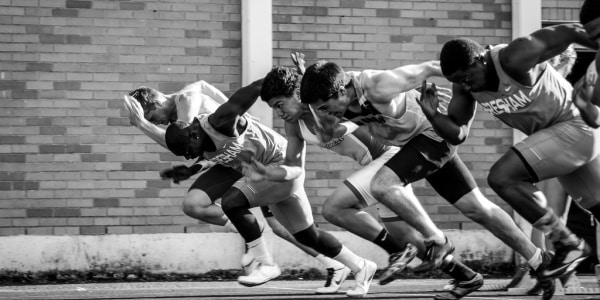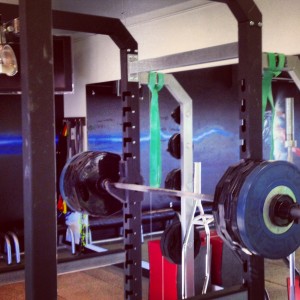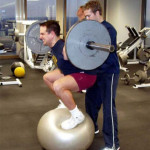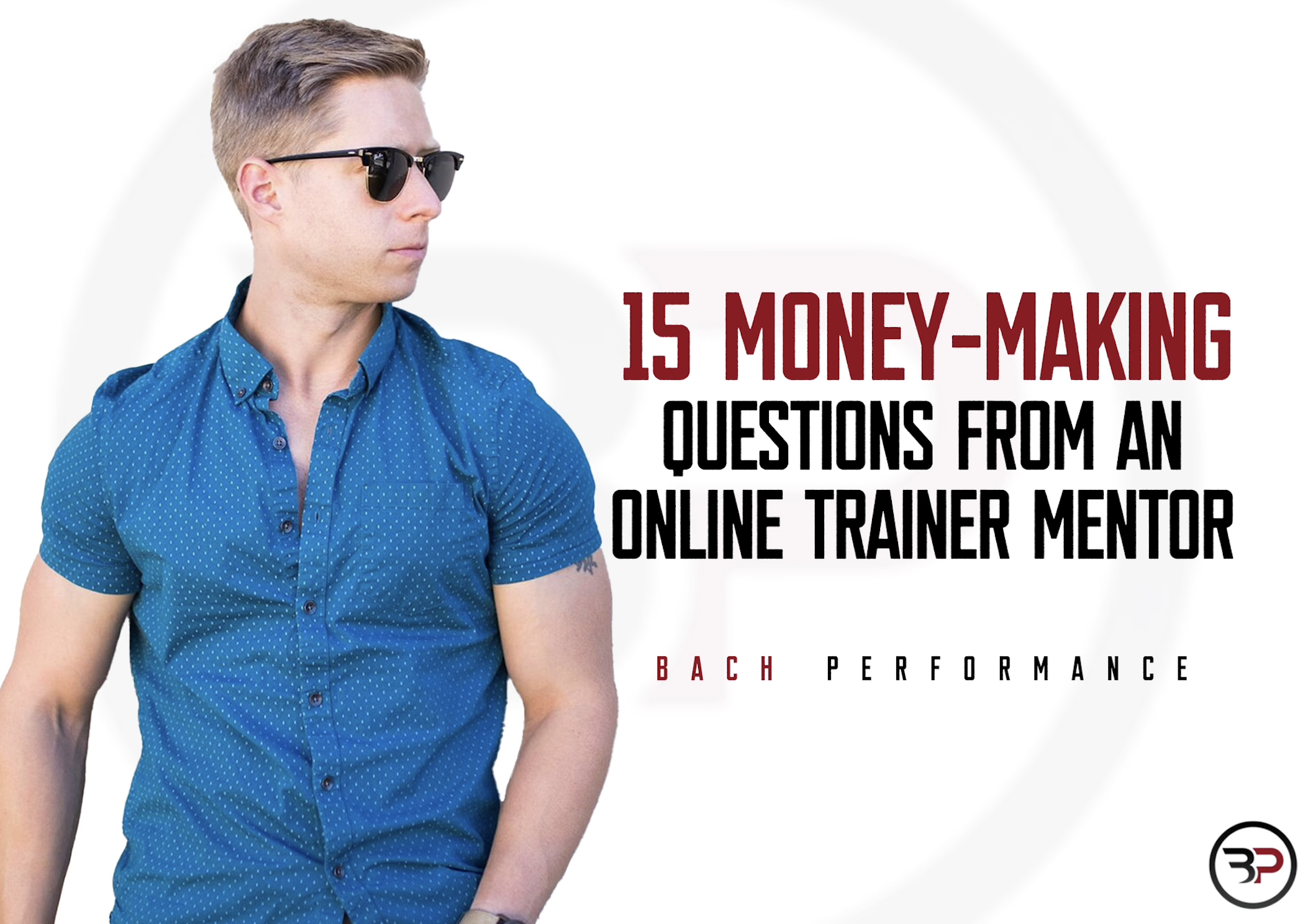Seven Laws of Building Athletic Muscle
January 22, 2015
I almost quit.
Twice.
I failed as an athlete trying to build athletic muscle and as a college meathead trying to re-establish some semblance of athleticism. I wasn’t’ happy with my porous results and I wouldn’t be happy unless I had the best of both worlds—being athletic and muscular. Not one, not the other, but both. What’s the point in being a muscle bound sluggish Ogre or lacking confidence?
There’s more to building athletic muscle than deadlifts and lifting weights. Instead of being ripe with dysfunction and scrawny you must ditch the old school “body-part splits,” “insanity workouts,” and “ the Westside or Die” mentality. There’s no perfect recipe.
Forget these tools, they’re only a method of training. What’s needed are sound principles to make real change and get things done. Your body should exude confidence in your abilities and perform in the world, not just the platform. These seven things will build explosiveness, lean muscle, shred body fat, and boost your confidence.

1.) Movement is a Must
The most common tip to become a better athlete is “get stronger.” This is important, but sports are more about movement than being strong. An over-emphasis on building strength is as dangerous as minimizing it. Without a base of movement it doesn’t matter how strong you are, inefficiencies in movement will hold back your high performance training. Sports occur with jumps, throws, sprints, cuts, hops, and reactive movement, not barbells and dumbbells.
Besides, sprints keep your fast twitch muscles firing on all cylinders and maintain explosiveness as you age. Perform jumps and throws before workouts. Sprint and do change of direction drills two or three times per week to keep you athletic and lean.
2.) Build a base of strength
There are multiple types of strength, but we’re focusing on absolute and relative strength.
Relative Strength is the amount of strength relative to body size. This reflects a person’s ability to control or move their body through space. All else being equal, smaller individuals have higher relative strength.
Absolute Strength is the maximum amount of force exerted regardless of muscle or body size. Greater amounts of absolute strength favor those with higher bodyweight and in general, larger individuals.
Building a base of strength improves relative strength (when size is in check) and improves your ability to generate force.

Why this matters:
You want a body that performs as well as it looks. Both absolute strength and relative strength are needed for high-performance gains. Greater relative strength can be driven up by greater absolute strength and tested through activities that require moving the body through space—jumps, chin-ups, sprints, and bodyweight movements in sport.
Plus, you’ll increase nervous system activation, leading too:
1. Increases muscle fiber recruitment: the number of muscle fibers being recruited.
2. Increases speed of rate coding: the speed at which the body sends electrical signals to the muscles.
These both lead to greater adaptation and improvements in workout performance and help you build lean muscle. Build your strength base, it improves your ability to build lean muscle, strength, boosts your endurance, and shreds body fat.
3.) Progressive overload
I hate to break it to you, but squats, cleans, presses, pulls and lunges are still the best for building lean muscle and strength. Too maximize these exercises you must progressively overload the body. That means add weight, decrease rest, and increase training volume. Push your body beyond its abilities or you won’t grow. Get comfortable being uncomfortable or get left behind.
4.) Keep Isolation Isolated
By isolation exercises I’m referring to the typical bodybuilder exercises: lateral raises, biceps curls, and the like. Except for a few exercises at the end of your workouts these isolation exercises are inefficient and a waste of time. They’re a piece of the puzzle for building muscle, but everything has its place. With a limited amount of time to train you’re better off building strength and explosiveness. Get strong, and then worry about isolation, as it’s needed. For others use isolation as it’s needed to prevent injury and improve movement. Here I’m referring to your rotator cuff exercises, activation exercises in your hips and trunk and the like. Make them a piece of the puzzle, but not the main focus of your workouts.
5.) Pride, Passion, and Perseverance.
“Pride, passion, and perseverance.”
“Pride, passion, and perseverance.”
I remember my High-School Football coach preaching these terms over, and over, and over again. I used to think he was full of shit, but he’s right. These three terms are vital to your success on and off the field.
Pride to put your best foot forward and pursue your goals no matter the circumstances. Passion to be relentless and put in the time when no-one is working. Perseverance to push through plateaus and struggles that will occur. Attacking training with pride, passion, and perseverance is imperative to building athletic muscle.
“Knowing” what to do is great, but it won’t get you results. Put in the work!
6.) Exercise Risk/Reward
Everything is a tool and requires a risk-reward analysis.

The behind-the-neck overhead press is a great muscle builder, but creates shoulder impingement and dysfunction in lots of individuals. Is the trade-off worth it?
No. Each exercise is a tool, not the end-all-be-all. There are dozens of exercises to train the same muscles, pick a better option.
7.) De-loading Exercise
Train all you want, but without an emphasis on recovery you’ll end up beat up, weak, and un-athletic.
Training hard is rarely the missing piece for progress. That title goes to recovery, the vital component that most athletes neglect. Intense exercise causes tons of stress: joint & ligament stress, muscular damage, neural fatigue, and hormone disruption are all factors that must be taken into account and is highly individualized to each athlete. Beginners may be able to go for months without backing down; however, advancing athletes require individually specialized programs to maximize training gains. De-load, do recovery workouts, use soft-tissue therapies and contrast showers for better recovery.
Building Athletic Muscle Wrap Up
There’s more to building muscle and being athletic than your strength numbers. Get off the platform and into the world. You have to move, move well, and move often in a variety of ways. You have a finite amount of resources for training; pick exercises wisely, train hard, and be persistent. There you have it. These principles are key for building athletic muscle without turning you into a bloated ball of fail.
About:Eric Bach, CSCS, PN1 is a strength coach at Steadman Hawkins Sports Performance in Denver, Colorado. As an author Eric has been featured in publications such as T-Nation, eliteFTS, and the PTDC. He is the owner of Bach Performance where he coaches clients to take control of their lives, helping them become stronger, shredded, and more athletic. Get your Free Ebook 101 Tips to Jacked and Shredded Here.
FACEBOOK: www.facebook.com/bachperformance/
TWITTER: twitter.com/Eric_Bach
P.S.
If you want all of this programmed into a workout to finally build the body you desire join Bach Performance Online Coaching today. I’ve got a ton of projects coming an awesome things for you coming up, so stay tuned and join the Bach Performance community for exclusive offers and updates.
Join us now at Bach Performance.com








[…] expanded my Seven Laws of Athletic Muscle to 11 laws to help you build a high performance body. What’s needed are sound principles to make […]
[…] In this case, Bryce loses lumbar stability below parallel in his squat. The risk of low-back injury (either acute or chronic) with an ass-to grass squat outweighs the potential benefits of building athletic muscle. […]